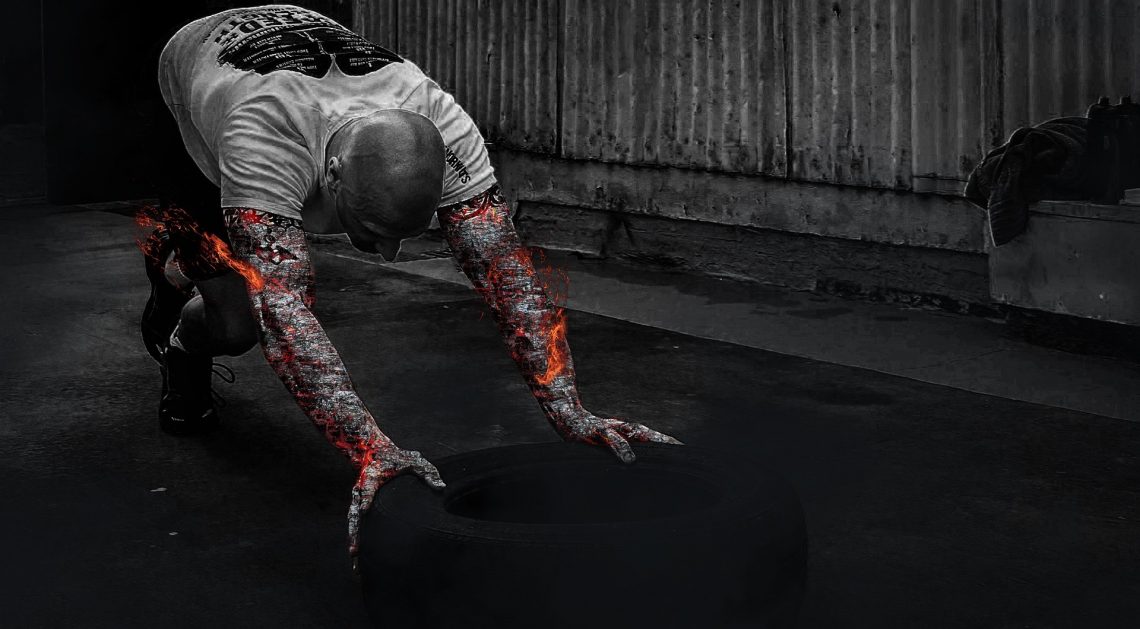Calisthenics have been around for thousands of years. They likely originated with the Ancient Greek warriors to increase muscle strength, endurance, and coordination, and they persist to this day.
Athletes as diverse as football players, MMA fighters, grapplers and basketball players use calisthenics to help their athletic performance.
Some people even go so far as to say that calisthenic strength is a more “useable” form of strength than training in other ways, like training with free weights. I’m one of those people.
Sure, there is value to increasing your strength through free weights, and obviously being strong is always more functional than being weak.
But I’ve found that once a baseline measure of strength is created, switching to calisthenics can translate better to day to day useable strength, especially when it comes to fighting sports like grappling. If you can squat 300lbs, but can’t get up off the ground more than 10 times in a row, that strength isn’t going to help you that much. I also think you can build useable strength with calisthenics even if you never did strength training before.
I do jiu jitsu, and I’ve found that periodizing training is a good practice for me. I’ll do 6-8 weeks of free weights, 6-8 weeks of calisthenics, 6-8 weeks of mostly grappling and cardio, and this is a good mix. However, I always “feel” more mat ready when I’m doing calisthenics.
When I started grappling I was lifting free weights, as heavy as I could. This didn’t seem to translate well to the mats. I had strength, and it helped in the beginning of rounds, but I quickly tired.
I also felt constantly over-trained. Trying to keep up with a heavy lifting schedule and 3-4 jiu jitsu classes a week just wasn’t doable, at least not at this age.
When I started focusing on calisthenics instead of free weights, I recovered better from the workouts and from the rounds of sparring.
And oddly I also felt stronger on the mats doing calisthenics than I did from doing free weights.
I’m sure that the years of lifting weights helped carry over strength to calisthenics, but I’m convinced that someone could build a good base of strength with calisthenics alone if necessary.
Benefits of Calisthenics
There are many benefits that calisthenics have that make them a fantastic (and in some ways superior) form of exercise.
- Calisthenics can be done anywhere – Unlike free weights most calisthenics don’t require any equipment whatsoever (the one notable exception is pull-ups). This lowers the barrier of entry to working out. You’re not reliant on a gym, which means you don’t have to sit around and wait for equipment to open up so you can get your pump in.
- Calisthenics build muscular endurance – Being able to move a ton of weight around in the weight room is pretty awesome. Ego-lifting is a fun past-time, but your max level of strength is only going to help in certain situations. Moving a fridge? Yep, it helps. Got to manhandle some dude and push him out of a bar? Yep, being strong is helpful there. But if you have to get into the weeds with any physical activity then you’re going to want muscular endurance. Max strength will only take you so far, muscular endurance will ensure you can get the job done.
- Calisthenics are great cardio – In addition to being a strength building exercise, some calisthenics (like burpees) are an incredible cardio workout. Burpees are a high intensity workout that can work your muscles, lungs and heart.
- Calisthenics are a great way to burn fat – Calisthenics help to burn fat in two distinct ways, 1) the exercises themselves can be done in a high intensity fashion, which helps to burn excess fat and 2) doing calisthenics doesn’t lead to the same calorie requirements as a heavy lifting routine, so you don’t need to consume as much food to get through a calisthenics workout as you do to make progressive jumps in weight training.
- Calisthenics are safe – Pushups, bodyweight squats, pull-ups, all these are relatively safe in comparison to bench press, squats and deadlifts. There are no weights to fall on you if you mess up, and they are easier on your joints than lifting heavy.
- Calisthenics lead to an aesthetic appearance – Because of the nature of calisthenics, the high volume of work combined with not needing to consume a lot of food, calisthenics can lead to an aesthetically appealing physique.
I know, I know. There are threads and threads and threads of people online arguing calisthenics over free weights. And there is no doubt that you will get stronger lifting free weights than you can get with calisthenics. But my question to you is, how strong is strong enough? Is benching 405lbs really going to be more functional than being able to knock back 500 burpees? Will that extra bench strength make you punch stronger, or last longer in a grappling match? Just watch any of the Iron Wolf videos on YouTube and you’ll see how strong calisthenics can make you.
What I’m trying to say is that in some sense there is a point of diminishing returns when it comes to pure strength built with free weights, but calisthenic strength, with it’s combination of endurance, cardio and muscular strength, is a great way to workout and maintain your fitness. This is especially true if you have competing physical needs, like if you are in jiu jitsu or boxing, or any other sport, and you’re not a young professional athlete. If you only have X amount of hours to dedicate to both your sport and your fitness (and X amount of dollars to contribute) then calisthenics can get you where you need to be.
The definition of the Lindy Effect says that the longer something has been around, the longer it tends to be around going forward, and therefore the more you can trust it. Calisthenics have been used for thousands of years by warriors and athletes to get into peak performance, and continues to be programmed to this day. If that isn’t Lindy then nothing is.






Comments by The Dapper Savage